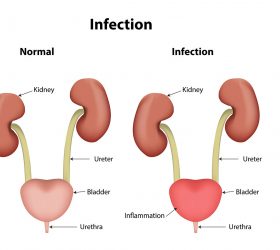A catheter is nothing but a tube in your bladder which removes the urine from the body. This tube may stay in the place for quite some time as well. If that is the case then it is called the indwelling catheter. The urine the directly drains in to the bag outside your body.
If you are using indwelling catheter, then there is an increased chance that you may develop UTI or Urinary Tract Infection.
Here are some preventive measures that have been suggested by the professional medical institutes after proper research. These measures will help you to avoid any type of infection that may crop up from catheters.
- You should insert an indwelling catheter only when there is clear indication and you should also remove it at the earliest possible time.
- You should maintain a closed drainage system. This is because any opening can create an entry route for bacteria. This can, in turn, lead to infection. In order collect sterile urine specimens you should not violate the closed system. Instead of that, you should collect the sterile urine specimens by using a sterile needle from the bag sample port only after cleaning the port with 65 – 70% isoprophyl alcohol and then drying it.
- You should maintain good hand hygiene and use gloves prior to operating or using the catheter. You should dispose the gloves after contacting with the patient and the catheter.
- You should avoid unnecessary irrigation that is not proved to decrease any bacteria.
- You should go for meatal care twice daily using water and soap working from the front to the back of the perineal care. There is no requirement for antiseptic usage. Though in some cases, the catheter can be cleaned with povidone-iodine solution and application of anti-biotic ointment at the site of insertion, most studies show that this practice has no advantage and may even lead to infection.
- You should check the tubing to see if there are any kinks to ensure that the urine flows uninterrupted and right into the drainage bag.
- You must secure the catheter. Though there is very little evidence showing to support any particular method you can prevent tension on the catheter, bladder neck trauma, meatal and urethral irritation as well as urethral tearing by securing the catheter. It reduces the inadvertent dislodgement risk and also improves patient comfort.
- You must empty the urine collection bag on a regular basis and utilise a separate container for each patient. You should never let the non-sterile containing container and the spigot to come in contact with each other. This can lead to bacteria formation.
Apart from the above precautions you should also buy Nelaton catheters that you can rest assured that there is least or almost no chances of any infection in the patient’s body. These will help to not only ease the ailing patient to a great extent but also ensure that he or she faces no extra trouble from a sudden infection.
